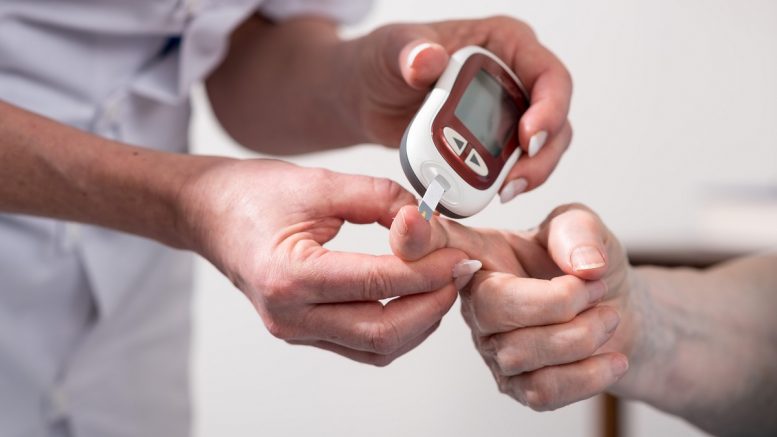Professionals from across the diabetes community are meeting this week in Berlin for the 16th International Conference on Advanced Technologies & Treatments for Diabetes (ATTD 2023), providing an excellent opportunity to reflect on why innovative digital technologies and new therapy approaches are needed to support people managing this chronic condition.
Diabetes is one of the biggest global health issues of our time, and its impact is ever increasing. An estimated 537 million adults aged 20–79 years worldwide – 10.5% of the global population – have diabetes, with the number of people living with the condition projected to increase to 783 million adults by 2045.[1] If left untreated, diabetes with its secondary complications can be serious, and even fatal. In 2021, 6.7 million adults are estimated to have died from diabetes and related complications – one every five seconds.1
We are in an era of constant innovation within healthcare delivery. Digital solutions can empower people to better manage their health, allow healthcare professionals to confidently diagnose and treat diseases, and help healthcare institutions to unlock greater efficiency. Yet, given the hugely differing care experiences and resources globally, what is the realistic role of technology and digital solutions to help tackle the global diabetes challenge?
Technology is ingrained in diabetes management, as people with diabetes need to check their glucose levels multiple times per day to manage and control their condition, limiting the risk of complications and slowing down disease progression. Access to and affordability of tools for everyday self-care are crucial.
The rising numbers of people with diabetes put healthcare professionals and health systems under pressure, underlining the need for reliable glucose monitoring systems that are effective and easy to use and can improve outcomes. Against this backdrop, blood glucose metres, which revolutionised the treatment of diabetes 40 years ago, are still proving to be a diabetes management solution that is accessible, affordable[2] and improves outcomes.[3] This confirms the view of the World Health Organization that blood glucose monitoring devices and test strips are a priority medical device[4], particularly in low – and middle-income countries where the vast majority of people with diabetes live1.
The need for a patient-centred approach with connectivity at its core
Technological development to support diabetes management with solutions such as smart insulin pens, insulin pumps or continuous glucose monitoring devices continues apace. Still, the true value of digital solutions appears when connectivity is placed at the centre of the stage. Data shouldn’t stay siloed but needs to be combined and contextualised to have the full overview for the patient’s therapy but also to make efficient use of the existing information for the benefit of sustainable healthcare systems.
That is why our solutions support diabetes management that is interconnected, patient-centric and personalised to the needs and lifestyle of people living with diabetes. Our integrated Personalised Diabetes Management (iPDM) strategy combines a structured therapeutic approach with devices and digital solutions in an open ecosystem, to support clinical and patient-relevant outcomes and help people with diabetes better manage their condition. [5]
We know from our years engaging with people with diabetes that when you are managing this condition, you don’t want to deal with it any more than you have to. To address this need, our innovations – for both people with diabetes and healthcare professionals – make use of decision support algorithms.
For people with diabetes, the mySugr app offers support by compiling and visualising all therapy-relevant data from various sources at a glance, with bolus recommendations and a coaching service. Meanwhile, for healthcare professionals, the RocheDiabetes Care Platform that integrates with mySugr presents patient data in an easy-to-read format, helping to identify insights and patterns for each individual patient’s glycemic control as well as for populations.
The data and insights generated through these digital solutions are making a (powerful) difference. In our open ecosystem, we combine these sources of information and translate them into actionable insights and decision support. Doing so can free up more room during the interactions between the healthcare professionals and the people with diabetes to enable more focus on meaningful conversations and eventually help to improve outcomes and quality of life.
Collaboration in an increasingly connected and integrated world
But, to continue to create sustainable and affordable solutions, we must take a collaborative approach. At Roche Diabetes Care, we want to transform healthcare systems and outcomes through iPDM – but we cannot do it alone. For us, collaboration is the name of the game.
That’s why we see partnerships as key for adding to the value and sustainability of our solutions. As part of our global cooperation, with counterparts from different sectors including Eli Lilly and Novo Nordisk in the diabetes field and companies such as IBM and Accenture in the consultancy or technological arena, we are improving the interconnectivity between our and our partner’s solutions. Through these partnerships we want new digital solutions to work as seamlessly as possible with the technology that people with diabetes are already using.
It is clear that technology and digital health hold great potential to improve the care for people with diabetes. However, it is only through a combination of digital solutions, connectivity, access efforts and collaboration that our industry will be able to provide effective diabetes care solutions for people around the world. At Roche Diabetes Care we are committed to making this happen.
By Marcel Gmünder, Global Head Roche Diabetes Care
References
[1] IDF. Diabetes Facts and Figures. Available at: https://idf.org/aboutdiabetes/what-is-diabetes/facts-figures.html#:~:text=Diabetes%20facts%20%26%20figures,-Last%20update%3A%2009&text=Approximately%20537%20million%20adults%20(20,and%20783%20million%20by%202045 [Accessed January 2023]
[2] Centers for Disease Control and Prevention. Diabetes. Available at: www.cdc.gov/chronicdisease/programs-impact/pop/diabetes.htm . [Accessed January 2023]
[3] Stedman, M, Rea, R, Duff, CJ, at al. The experience of blood glucose monitoring in people with type 2 diabetes mellitus (T2DM). Endocrinol Diab Metab. 2022;5;e00302. https://doi.org/10.1002/edm2.302 (accessed January 2023, Introduction, paragraph 1, sentences 1-2)
[4] https://www.who.int/publications/i/item/9789240027978
[5] https://diabetes.roche.com/hcp-gb/integrated-personalised-diabetes-management





